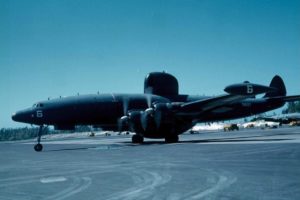Four Japanese fleet aircraft carriers, the Akagi, Kaga, Hiryu and Soryu, were sunk, along with the loss of hundreds of Japanese aircraft, losses that the Japanese would never be able to replace. The U.S. lost the aircraft carrier Yorktown, along with a number of its carrier- and land-based aircraft that were either shot down by Japanese forces or bombed on the ground at the airfields. The Battle of Midway was, by most accounts, the beginning of the end of the Japanese Navy’s control of the Pacific Ocean.
Starting in July 1942, one of the Fulton-class submarine tenders was always stationed at the atoll to support submarines patrolling Japanese waters. In 1944, a floating dry dock joined the tender. After the Battle of Midway, a second airfield was developed, this one on Sand Island. This work necessitated enlarging the size of the island through land fill techniques, that when concluded, more than doubled the size of the island.
Korean and Vietnam Wars:
In 1950, the Navy decommissioned Naval Air Station Midway, only to re-commission it again to support the Korean War. Thousands of troops on ships and aircraft stopped at Midway for refueling and emergency repairs. From 1968 to September 10, 1993, Midway Island was a Naval Air Facility.
During the Cold War, the U.S. established an underwater listening post at Midway to track Soviet submarines. The facility remained secret until its demolition at the end of the Cold War. U.S. Navy WV-2 (EC-121K) “Willy Victor” radar aircraft flew night and day as an extension of the Distant Early Warning Line, and antenna fields covered the islands.

With about 3,500 people living on Sand Island, Midway also supported the U.S. troops during the Vietnam War. In June 1969, President Richard Nixon held a secret meeting with South Vietnamese President Nguyen Van Thieu at the Officer-in-Charge house or “Midway House”.
Civilian Handover:
In 1978, the Navy downgraded Midway from a Naval Air Station to a Naval Air Facility and large numbers of personnel and dependents began leaving the island. With the war in Vietnam over, and with the introduction of reconnaissance satellites and nuclear submarines, Midway’s significance to U.S. national security was diminished. The World War II facilities at Sand and Eastern Islands were listed on the National Register of Historic Places on May 28, 1987 and were simultaneously added as a National Historic Landmark.
As part of the Base Realignment and Closure process, the Navy facility on Midway has been operationally closed since September 10, 1993, although the Navy assumed responsibility for cleaning up environmental contamination at Naval Air Facility Midway.
Midway was designated an overlay National Wildlife Refuge on April 22, 1988 while still under the primary jurisdiction of the Navy.

From August 1996, the general public could visit the atoll through study eco-tours. This program ended in 2002, but another visitor program was approved and began operating in March 2008. This program operated through 2012, but was suspended for 2013 due to budget cuts.